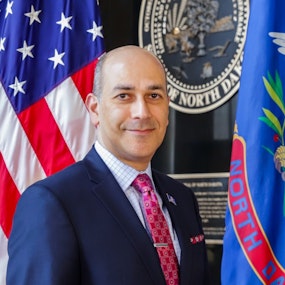ROBERT JOHNSON:
This is the award-winning Public Health Review Morning Edition for Tuesday, April 2, 2024. I'm Robert Johnson. Now, today's news from the Association of State and Territorial Health Officials.
JILL HUNSAKER RYAN:
We are anticipating new state funding this year. And this will help us promote increased testing in areas with low testing rates and higher risks, such as older homes or environmental exposures.
JOHNSON:
Healthy neighborhoods are the focus on day two of National Public Health Week and a priority in Colorado, where new work to reduce childhood exposure to harmful lead toxins is getting underway. This is Colorado Health Department Executive Director and ASTHO Member, Jill Hunsaker Ryan.
JILL HUNSAKER RYAN:
We want to raise awareness among healthcare professionals about the continued importance of lead poisoning testing. We're providing local public health agencies and clinics serving high-risk children with equipment and testing resources to support testing of children who may not have a health care provider.
JOHNSON:
Ryan says Medicaid offers free lead testing for eligible kids. She says the state also wants to boost its ability to locate and remove the contamination.
RYAN:
And then we're also going to be set up to conduct in home environmental investigations for children who do have elevated blood lead levels, because we want to be able to identify the source of exposure and how to mitigate that.
JOHNSON:
Even though the plan includes a lot of testing. Ryan says it's really about locating and addressing the problem.
RYAN:
And then I think what's different about these new interventions is that not only will we be doing more testing, but when we find that a child has elevated blood lead levels, we're actually able to determine where the source is.
JOHNSON:
ASTHO has a legislative prospectus about reducing chemical exposure and a report on testing for lead in water. You can read both by clicking the links in the show notes.
Today's National Public Health Week spotlight was on healthy neighborhoods. Yesterday, we kicked off our coverage of the week with a conversation about civic engagement. Tomorrow, the topic is climate change with ASTHO Alum, Dr. Karen Smith.
A new ASTHO policy statement on public health infrastructure recommends sustained investments and the adoption of public health standards. Dr. Nizar Wehbi is state health officer in North Dakota and an ASTHO member. He says there are several approaches available to help improve agency infrastructure.
NIZAR WEHBI:
For example, State Health Assessment State Health Improvement Plan, having a strategic plan that encompasses some improvement targets, or specific metrics and outcomes that we want to track in order to assess our work and how we are improving in our strategy that we are accomplishing.
JOHNSON:
Wehbi says sustained infrastructure investment is needed to create the systems that will be used to respond to the next emergency.
WEHBI:
So, investing and updating our databases, for example, our data modernization initiatives, making sure that: we have the dashboards, we have the data, we have the agility, that will allow us to make decisions based on real time data. So, then we can address and respond to communicable diseases and other public health emergencies.
JOHNSON:
He says the data that results can support conversations with policymakers.
WEHBI:
At the same time, it is for state health officials as well as for various public health professionals and public health departments to understand and realize the importance of funding sustainability of funding, but also to focus on workforce to focus on databases and the infrastructure that will allow us as public health departments to be successful in the future.
JOHNSON:
You can read ASTHO's policy statement on public health infrastructure using the link in the show notes.
Also today, firearm violence can impact a community long after a tragic event. ASTHO has resources to help agencies respond, O'Keyla Cooper has more.
O'KEYLA COOPER:
The ASTHO Catalyst Center for Firearm Injury Prevention has created resources to aid health agencies and communities affected by mass firearm violence. The resources provide trauma-responsive and crisis communication support, along with guidance on recognizing trauma responses, reporting mass shootings, and coping with grief. To learn more, click the link in the show notes.
JOHNSON:
Finally, this morning be the first to know when ASTHO issues new policies or releases new resources to help you address the latest public health concerns. Join the list to receive ASTHO's Public Health Weekly email newsletter, the link is in the show notes.
Before we go a reminder also to follow this newscast on your podcast player and connect with ASTHO on social media. We're on LinkedIn, Twitter, and Facebook.
That'll do it for today. We're back tomorrow morning with more ASTHO news and information. I'm Robert Johnson. You're listening to the award-winning Public Health Review Morning Edition. Have a great day.






